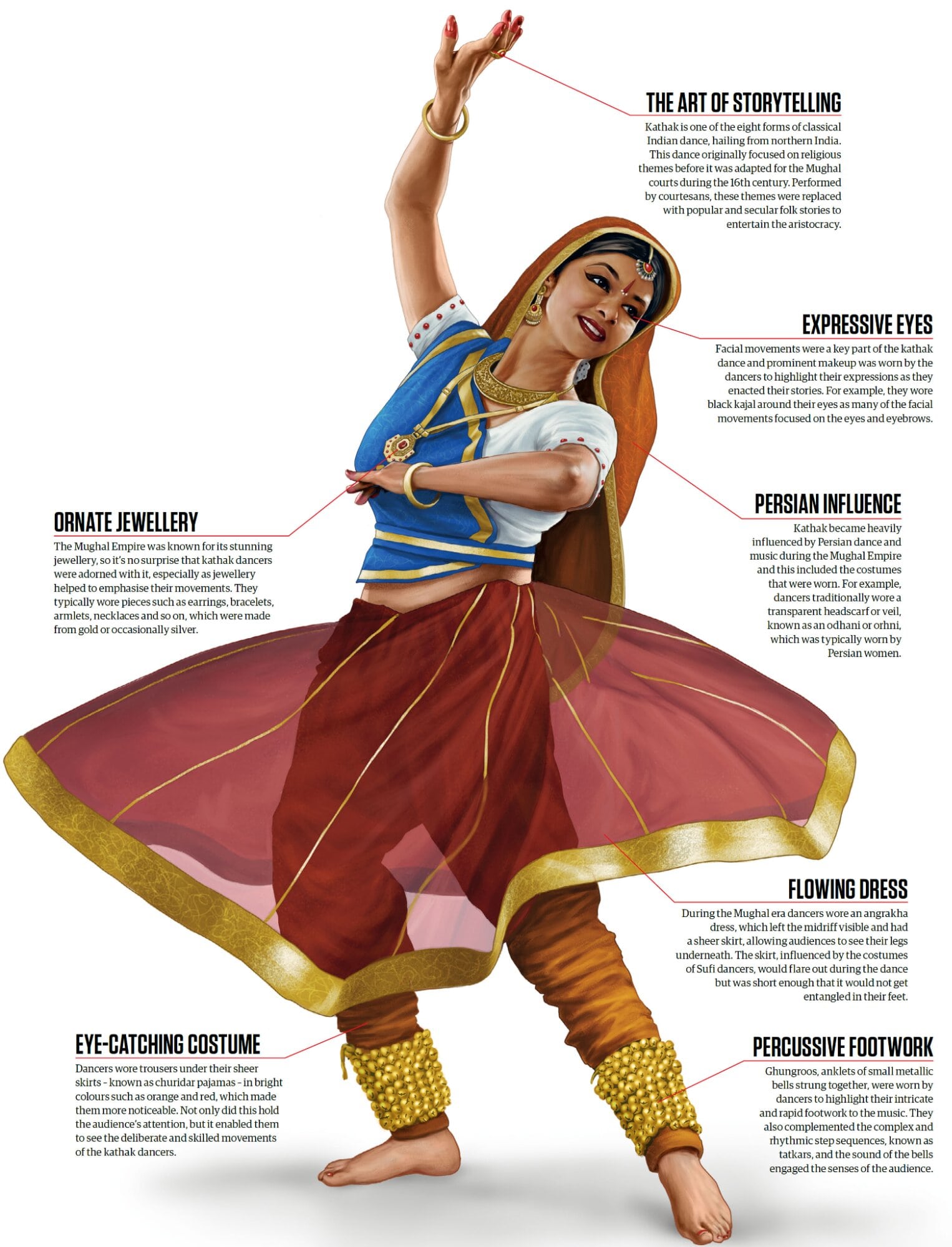Important Facts For Prelims
Kathak
- 14 Jan 2022
- 4 min read
Why in News
Recently, the famous Kathak dancer Pandit Munna Shukla died.
- His most noted works include the dance-drama Shan-e-Mughal, Inder Sabha, Ameer Khusro, Anga Mukti, Anvesha, Bahar, Tratak, Kraunch Badh, Dhuni, among others.
- His contribution to the world of dance was awarded the Sangeet Natak Akademi Award (2006), Sahitya Kala Parishad Award (2003) and the Saraswathi Samman (2011).
Key Points
- About:
- The word Kathak has been derived from the word Katha which means a story. It is primarily performed in Northern India.
- It was primarily a temple or village performance wherein the dancers narrated stories from ancient scriptures. It is one of the classical dances of India.
- Evolution:
- Kathak began evolving into a distinct mode of dance in the fifteenth and sixteenth centuries with the spread of the Bhakti movement.
- The legends of Radha-Krishna were enacted in folk plays called rasa lila, which combined folk dance with the basic gestures of the kathak story-tellers.
- Under the Mughal emperors and their nobles, Kathak was performed in the court, where it acquired its present features and developed into a form of dance with a distinctive style.
- Under the patronage of Wajid Ali Shah, the last Nawab of Awadh, it grew into a major art form.
- Dance Style:
- Usually a solo performance, the dancer often pauses to recite verses followed by their execution through movement.
- The focus is more on footwork; the movements are skillfully controlled and performed straight-legged by dancers wearing ankle-bells.
- The tatkaar is the fundamental footwork in kathak.
- Kathak is the only form of classical dance wedded to Hindustani or North Indian music.
- Some prominent dancers include Birju Maharaj, Sitara Devi.
- Other Classical Dances in India
- Bharatanatyam from Tamil Nadu
- Kathakali, from Kerala.
- Kuchipudi, from Andhra Pradesh.
- Odissi, from Odisha.
- Sattriya, from Assam.
- Manipuri, from Manipur.
- Mohiniyattam, from Kerala.
Bhakti Movement
- The development of the Bhakti movement took place in Tamil Nadu between the seventh and ninth centuries.
- It was reflected in the emotional poems of the Nayanars (devotees of Shiva) and Alvars (devotees of Vishnu).
- These saints looked upon religion not as a cold formal worship but as a loving bond based upon love between the worshipped and worshipper.
- They wrote in local languages, Tamil and Telugu and were therefore able to reach out to many people.
- In course of time, the ideas of the South moved up to the North but it was a very slow process.
- A more effective method for spreading the Bhakti ideology was the use of local languages. The Bhakti saints composed their verses in local languages.
- They also translated Sanskrit works to make them understandable to a wider audience. Examples include Jnanadeva writing in Marathi, Kabir, Surdas and Tulsidas in Hindi, Shankaradeva popularising Assamese, Chaitanya and Chandidas spreading their message in Bengali, Mirabai in Hindi and Rajasthani.







